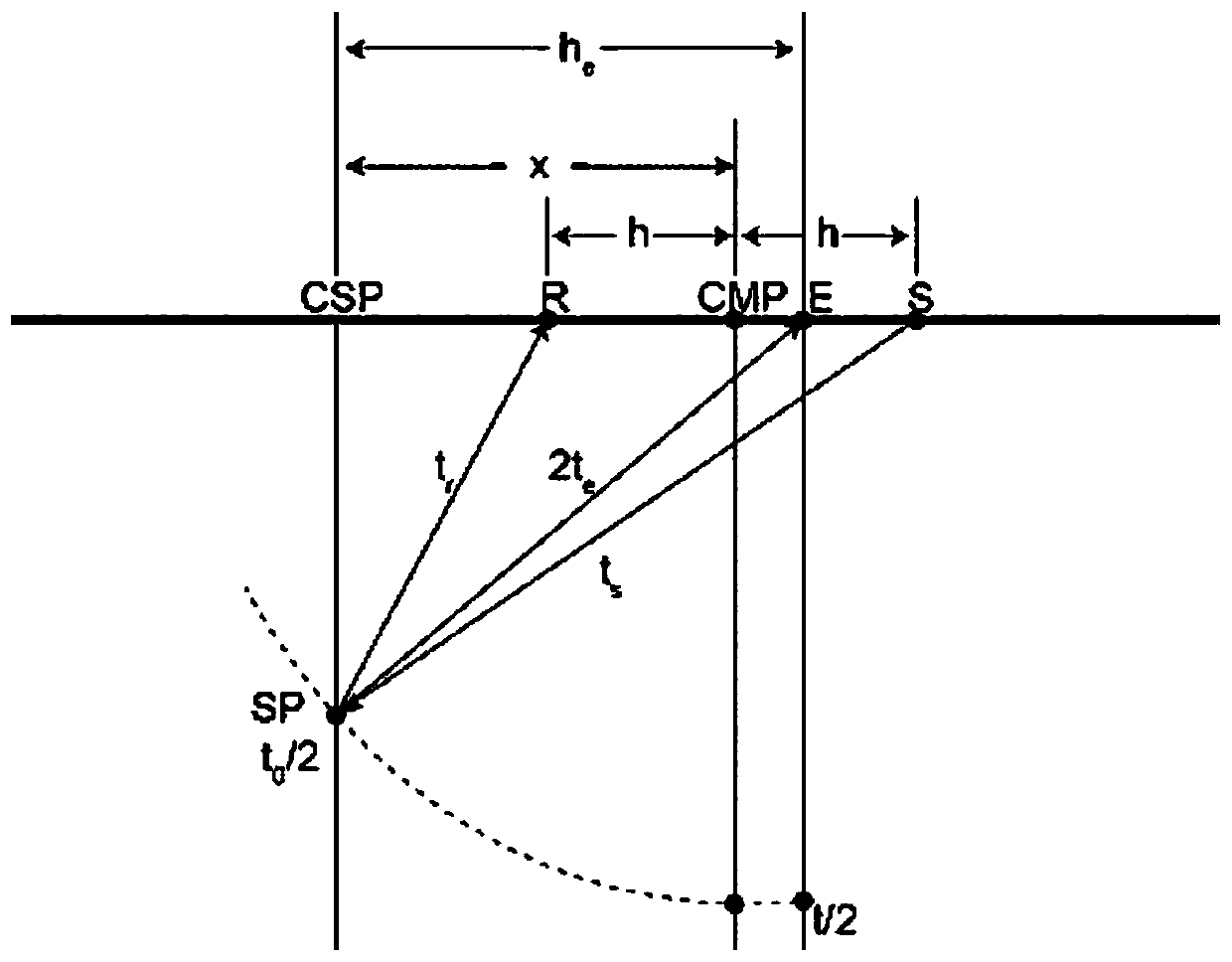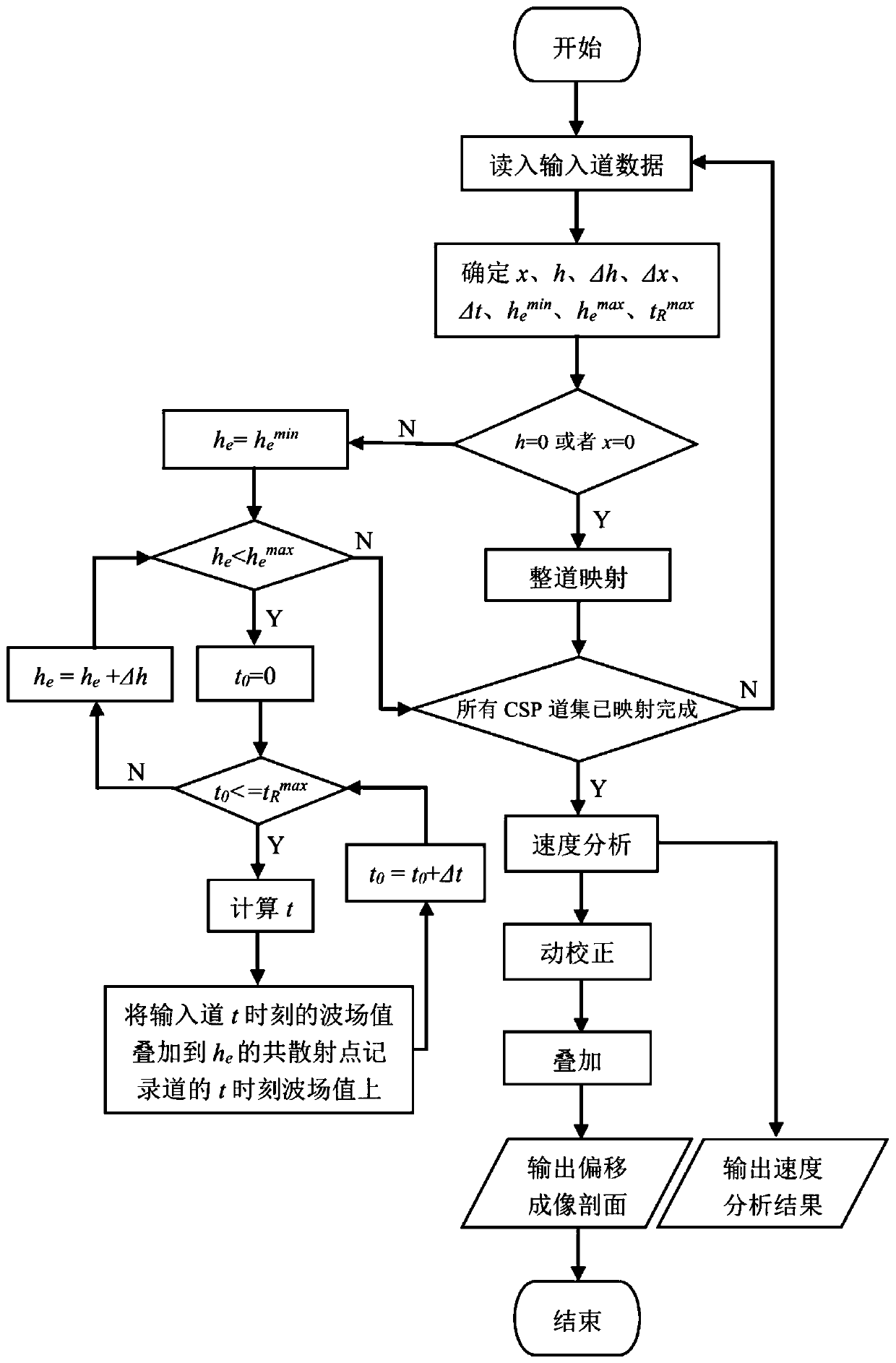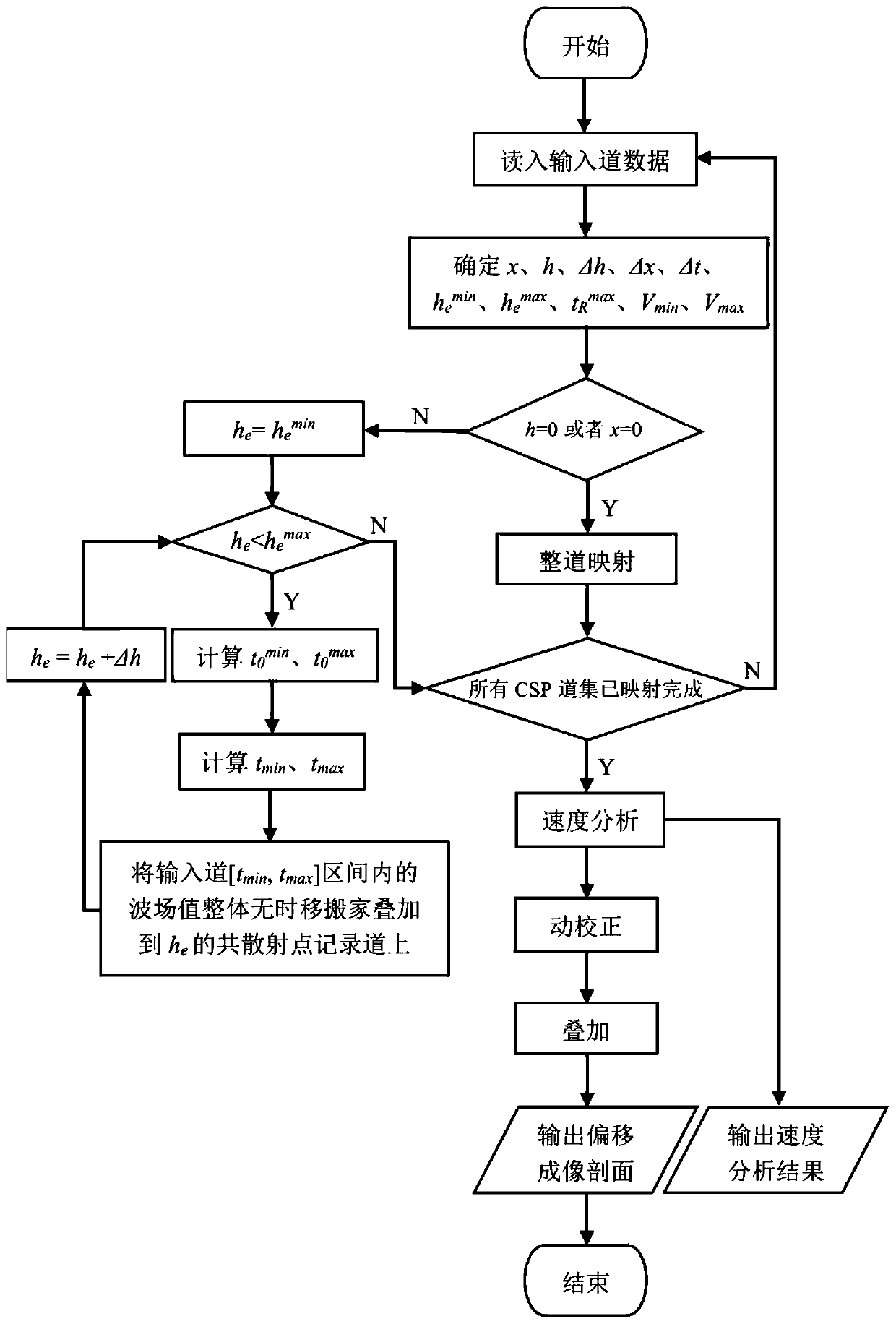A pre-stack time migration imaging method of common scattering points based on time depth scanning
A technology of pre-stack time migration and imaging method, applied in seismology, instruments, measurement devices, etc., can solve the problems of impairing imaging effect, difficult application of migration imaging method, increasing calculation amount and workload, etc., to improve imaging. effect, achieve the effect of reliable offset imaging
- Summary
- Abstract
- Description
- Claims
- Application Information
AI Technical Summary
Problems solved by technology
Method used
Image
Examples
Embodiment Construction
[0052] The present invention will be described in more detail below in conjunction with the accompanying drawings and embodiments.
[0053] The invention discloses a time-depth scanning-based common-scattering point pre-stack time migration imaging method, which is based on the equivalent-offset common-scattering point pre-stack migration imaging method proposed by Bancroft et al. (1994, 1998) , to construct the equivalent offset h e :
[0054] Please refer to figure 1 , x is the distance from the common center point (CMP) to the scattered point on the ground projection point (CSP), h is the half-offset distance, t 0 is the self-excitation and self-collection travel time of the scattering point at the ground projection point (x=0, h=0). This figure shows the real propagation path of the seismic wave, that is, from the source point S to the scattering point SP to the receiving point R, and the self-excited and self-receiving path corresponding to the equivalent offset from p...
PUM
 Login to View More
Login to View More Abstract
Description
Claims
Application Information
 Login to View More
Login to View More - R&D
- Intellectual Property
- Life Sciences
- Materials
- Tech Scout
- Unparalleled Data Quality
- Higher Quality Content
- 60% Fewer Hallucinations
Browse by: Latest US Patents, China's latest patents, Technical Efficacy Thesaurus, Application Domain, Technology Topic, Popular Technical Reports.
© 2025 PatSnap. All rights reserved.Legal|Privacy policy|Modern Slavery Act Transparency Statement|Sitemap|About US| Contact US: help@patsnap.com



